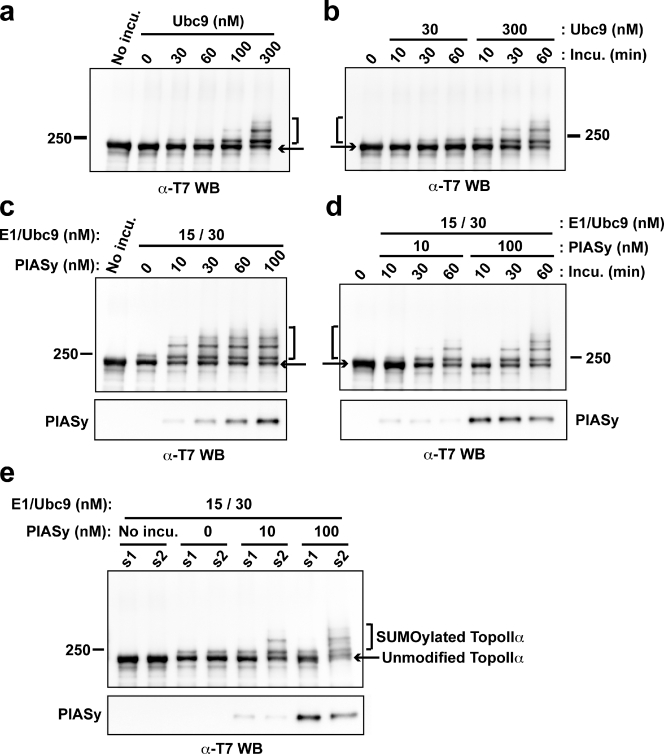Figure 2.
PIASy is required for the efficient SUMOylation of TopoIIα and for the selection of SUMO paralogues. (a) Ubc9 dosage-dependent SUMOylation. T7 tagged-TopoIIα was incubated in a reaction containing various concentrations of Ubc9 (0–300 nM) in the presence of SUMO2. The amount of SUMO2-conjugated TopoIIα was similar to that seen in XEE only when 300 nM Ubc9 was added. (b) Time course experiment with physiological (30 nM) and higher (300 nM) concentration of Ubc9. (c) PIASy dosage-dependent SUMOylation. T7-TopoIIα was incubated as in panel a, except with various concentrations of PIASy (0–100 nM) and with the physiological concentration of Ubc9 (30 nM). PIASy efficiently facilitated SUMOylation of TopoIIα under conditions using 30 nM Ubc9, where SUMOylation had barely appeared in the absence of PIASy. SUMOylation was saturated using >60 nM PIASy. (d) Time course experiment of PIASy-dependent SUMOylation. The reactions were performed with physiological (10 nM) or higher (100 nM) concentrations of PIASy in the presence of 30 nM Ubc9. (e) T7-TopoIIα was incubated with either SUMO1 (s1) or SUMO2 (s2) in the presence of PIASy as indicated. PIASy showed a preference for SUMO2 over SUMO1. Positions of molecular mass standards (kD) are indicated on the sides of the gel blots.

